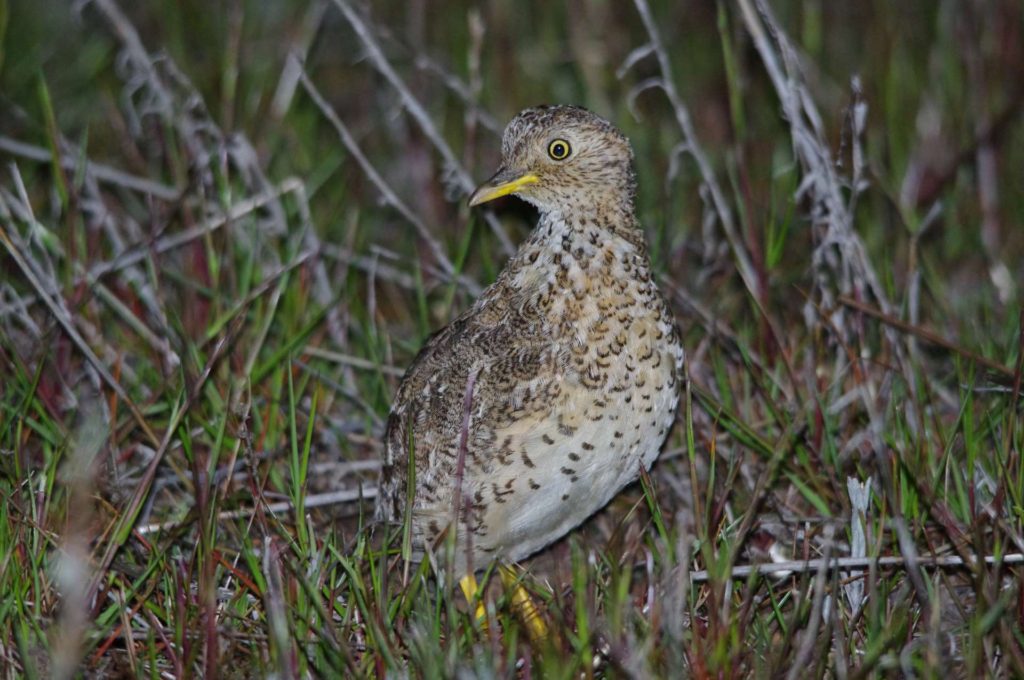Although at first glance it might appear unassuming, in terms of evolutionary distinctness and risk of extinction, the Plains-wanderer has no rival.
These ground-dwelling, quail-like birds live in the increasingly rare grasslands of south-eastern Australia. Because of damage done to their habitat, there are now very few of these birds left.
Their speckled brown plumage makes them incredibly hard to spot amidst the grass, and because of this, as well as their critically endangered status, it is extremely rare to come across one.

As we heard in the latest episode of the Look at me podcast, Plains-wanderers are polyandrous – with females mating with multiple males over the course of the breeding season and leaving most of the parenting to the fathers.
But for this to occur in the first place, the Plains-wanderers need to track down their elusive mates. Although little research has been done on these unique birds, it has been suggested they have a specialist adaptation for doing just this.
It starts with the avian interaural canal – which is basically an air-filled cavity connecting the two ears internally. Plains-wanderers have very large interaural canals and research has suggested they use this to communicate with one another, while evading being located by predators.
Hearing in larger animals, like humans, works by using the time between sound detection in each ear to determine the direction of the source. In smaller animals, however, when the distance between ears might only be a few centimetres, these miniscule time lags are hard to detect.

The interaural canal enables sound to travel in one ear and through the head to the other. The bird then gets directional information from the soundwave striking the outside of the eardrum as well as the inside, through the interaural canal, and lastly, from the interaction between these two soundwaves. Together, these effects allow the bird to pinpoint the source of a sound with much greater accuracy than a larger animal, such as a potential predator, would have.
The call of a Plains-wanderer is surprisingly low in frequency, and at these low frequencies the effect of the interaural canal is maximised. Using this technique, the Plains-wanderers hope to let potential mates know where they are, while still hiding themselves from nearby predators who cannot detect the low-frequency call. Basically, it’s love song detections on a radio channel only Plains-wanderers can hear.

To hear more about the Plains-wanderer and other lesser-known Australian species, check out Remember the Wild’s own special channel – Look at me, a podcast series produced in collaboration with Australian Conservation Foundation and Guardian Australia, and hosted by Benjamin Law.
The next episode, featuring the Blue-banded Bee, is out on February 14. Listen at the Guardian website or via your preferred podcast provider.
Listen to the call of the Plains-wanderer. This video courtesy of Philip Maher, Australian Ornithological Services – www.philipmaher.com
Banner image courtesy of Chris McCormack


Leave a Reply